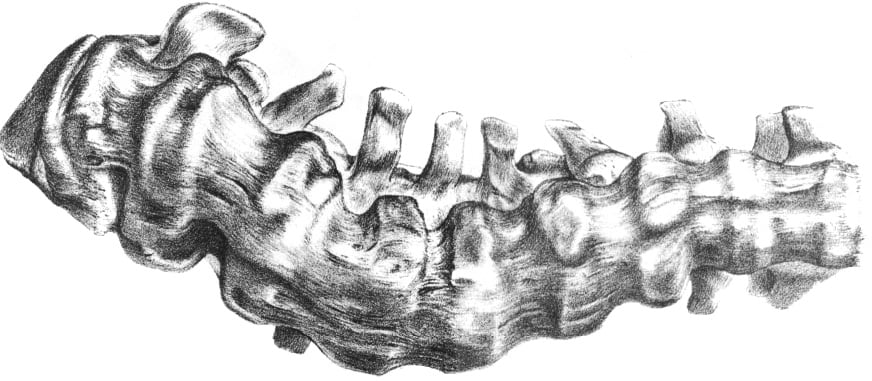What Are the Most Common Car Accident Injuries?
Car accidents can be extremely dangerous events, but what are the most common auto accident injuries? Whether you were injured in a rear-end accident or T-bone accident, the G-forces that often result are so high that even NASA and the military do not subject astronauts or fighter pilots them. Consequently, car crashes often result in all kinds of injuries. Here are the 6 most common types of injuries the car accident attorneys at Johnson Law, P.C. see on an almost daily basis.
Neck Injuries (Cervical Spine Injuries)
Your cervical vertebrae – your neck - bears the brunt of the forces when you are involved in a car accident, especially rear-end crashes. Visualize your head as a bowling ball and your neck as a broomstick. When your vehicle is struck in a car accident, the force that is generated is immediately transferred through the frame of the vehicle. If you are struck from behind, it causes the vehicle to shoot forward. Your body goes the opposite direction, because it’s not bolted to the frame of the vehicle. This all happens in a fraction of a second. Now imagine what is happening to that broomstick the bowling ball is on top of. It’s bending like crazy, going back and forth until the energy finally dissipates. This is the same general motion that causes neck in juries in car crashes. Your neck is hyperextended forward and backward or side to side, or a combination both. This is commonly referred to as “whiplash.” This motion strains and sprains the muscles and ligaments that attach to the 7 cervical vertebrae. It may also damage the intervertebral disks in-between the vertebrae, but we will talk about that in more detail shortly. If it is primary a strain/sprain of the neck, then typically you will recover, but it may take months if not more of intensive treatment to get you better again. We do see permanent impairments result from these types of neck injuries, but it is more common to see full recoveries. Even if you fully recover, you still are entitled to compensation for your harms and losses (also known as pain and suffering).
Disk Herniation (“Slipped Disks”)
Another very common type of injury we see are disk herniations. When we see herniations, they are most commonly in the neck (cervical) or low back (lumbar). However, we do see mid-back herniations (thoracic), they are just less common and typically result from catastrophic collisions. A herniation results from trauma to the disk that rests in-between two vertebrae. The disk is the “cushion” that allows your spine to absorb and transfer force vertically. If the disks were not there, the vertebrae would be resting on top of each other would constantly be grinding. The concern with a disk herniation stems from whether or not the disk is now intruding into the spinal column and potentially causing nerve impingement. When this occurs, the person will feel radiating shooting pains, commonly referred to as radiculopathy. The person may also experience numbness in one or more of their appendages. This is called paresthesia. Herniations may necessitate surgery, but they may also be addressed through conservative care like chiropractic care or physical therapy.

Annular Fissures
Annular fissures are similar to disk herniations in that they result from damage to the spine’s intervertebral disks. An annular fissure occurs when the fibers that make up the outer layer of intervertebral disks become separated, often as a result of being exposed to a traumatic event like a motor vehicle collision. This outside layer of an intervertebral disk where annual fissures occur is known as the annulus fibrosus. Annular fissures are often diagnosed through MRIs, and can be incredibly painful. Annular fissures also can take a long time to heal, even with intensive rehabilitation treatment.
Shoulder Injuries
Your shoulder is one of the most complex joints in your body. In fact, four individual joints make up your “shoulder joint” and each of these joints is susceptible to injury in a car crash. There are also three primary bones that are part of your shoulder: the humerus, scapula, and clavicle. Each of these bones can be injured by breaking or fracturing in a car crash. Clavicle injuries are especially common. In addition, your shoulder is powered in large part by your rotator cuff, which itself is actually made up of four individual muscles: the supraspinatus, infraspinatus, teres minor, and subscapularis. The long head of your biceps also connects your arm to your rotator cuff muscles. Each of these muscles can tear, either partially or fully, which often necessitates surgery. There are also a number of ligaments and nerves that are interwoven throughout your shoulder. Finally, the cartilage that lines the shoulder socket, the glenoid labrum, also is known to fail when a driver or passenger in a car crash braces for impact. Labral tears sometimes require surgery, and can be extremely painful.
Collar Bone Breaks or Fractures
Your clavicle, or collar bone, connects your sternum to your shoulder. There are joints at each end of your clavicle, the AC and SC joint. When a clavicle breaks or fractures, it usually does so in the middle of the bone, between the AC and SC joint. Occasionally a break or fracture will occur at one end or the other, either at the shoulder blade or the rib cage. When a driver or passenger either braces for impact with an arm, or has their seatbelt suddenly catch from a hard impact, it is common to see clavicle breaks and fractures result. Most clavicle injuries do not require surgery, but complex or commuted fractures sometimes do. Most clavicle injuries heal in a matter of months; however, some take far longer and result in permanent disfigurement of the clavicle.
Headaches and/or Concussions: Traumatic Brain Injuries
Once upon a time, doctors would tell their patients that the concussive symptoms they were experiencing would resolve with nothing but time. Thanks to advances in modern medicine, we now know that concussions, or traumatic brain injuries (TBI), can have lasting, permanent effects, even if property diagnosed and treated. Many people have heard of TBIs because of the controversy surrounding NFL players and Chronic Traumatic Encephalopathy (CTE). A car crash is very similar to being tackled in football. Depending on the direction of the impact, your brain is rattled back and forth inside of your skull. In a common rear end impact, your brain is first slammed into the back of your skull and then it is slammed to the front of your skull with a “whiplash” type effect. Most people do not understand that your brain is essentially floating inside of your skull, which predisposes it to TBI injuries in serious car crashes.
These are some of the most common auto accident injuries our attorneys see. However, there are many other types of injuries and every accident is unique. If you need an attorney to help with your personal injury claim we can help.
IF YOU OR A LOVED ONE HAVE SUFFERED ANY OF THESE INJURIES IN A CAR ACCIDENT GIVE THE ATTORNEYS AT JOHNSON LAW A CALL. WE OFFER FREE CONSULTATIONS.

